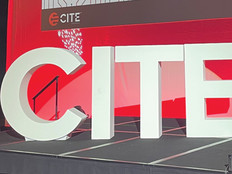K–12 IT Teams Use Artificial Intelligence to Help with Wi-Fi Upkeep
K–12 districts are adopting artificial intelligence to help with Wi-Fi upkeep as networks are feeling added pressure from one-to-one device programs and connected modern classrooms take up bandwidth.
While the entire education sphere is feeling the burden of increased use of connected devices in and around the classroom, unlike higher education institutions, K–12 districts may not have the resources to hire large IT teams to handle every issue as it comes up.
This can strain district IT staff who are forced to troubleshoot issues, which can take a substantial amount of time and effort but cannot be ignored, creating a sense of frustration among all players. In response, some districts are turning to AI to handle the more mundane tasks in order to free up IT teams to consult on more important jobs.
SIGN UP: Get more news from the EdTech newsletter in your inbox every two weeks!
Satisfy IT and Student Needs with AI
At North Canton City Schools in Ohio, a new one-to-one program involving 5,000 new Chromebooks, as well as a BYOD initiative, increased demand for connectivity and created network issues, causing tension across the district.
“Students were dissatisfied they couldn’t use personal devices and faculty were frustrated with poor Wi-Fi,” John Fano, a system administrator for the district, says as part of a case study. “The IT team was annoyed because we could not troubleshoot problems quickly and cost effectively. It was clear that we outgrew our WLAN and were in need of an upgrade.”
To solve the problem, administrators adopted an AI-enabled Wi-Fi solution that was able to run across the district’s 802.11ac Wave 2 access points. After implementing the technology, IT staff saw an incredible difference in the time it took to solve problems with the Wi-Fi.
“It used to take hours or days tracing data and doing manual packet captures to fix wireless issues. Now solving client issues takes just minutes,” says Fano. “In addition, with a single glance I can see exactly what level of service we are delivering to every student, teacher, administrator and guest.”
The Future Seems Bright for AI-Assisted Wi-Fi
While the use of AI to assist in network management is relatively new, certain companies are already offering versions of the technology for IT teams.
In June 2017, Cisco unveiled its intent-based network solution, which allows IT officers to automate network intent while the network uses machine-learning processes to give actionable insights.
Now dubbed the Cisco DNA Center, the program promises to cut costs and time for IT departments.
“Today, IT organizations’ operational costs are 2-3X their capital costs,” Scott Harrell, senior vice president and general manager of Cisco’s Enterprise Networking Business, writes in a blog post. “DNA Center Assurance technology dramatically simplifies network operations, helping businesses save time and money.”
Meanwhile, Aruba is offering IT teams NetInsight, which uses AI to identify connectivity patterns and proactively address network issues.








